Abstract
To define characteristics that determine the entry of ketoconazole (KTZ) into Candida albicans cells, we studied the uptake of [3H]KTZ. The cells rapidly and markedly concentrated the drug: 30% of the final 80-fold intracellular concentration was attained in less than 1 min, and greater than 60% was attained in 10 min. Penetration of [3H]KTZ at an extracellular concentration higher than 0.1875 microM (0.1 microgram/ml) occurred by a simple diffusion mechanism. At lower concentrations, accumulation of the drug was an active, energy-requiring process, dependent at least in part on glycolysis, and pH dependent (optimal pH, 6.6). The active transport system had a high binding affinity (Km = 50 nM) and a high maximum velocity of uptake (Vmax = 1.4 mumol min-1 10(-7) cells). It was not possible to displace intracellular [3H]KTZ with high concentrations of unlabeled KTZ or other antifungal agents. These findings suggest that KTZ is rapidly taken up, highly concentrated, and tightly bound to cellular components of C. albicans.
Full text
PDF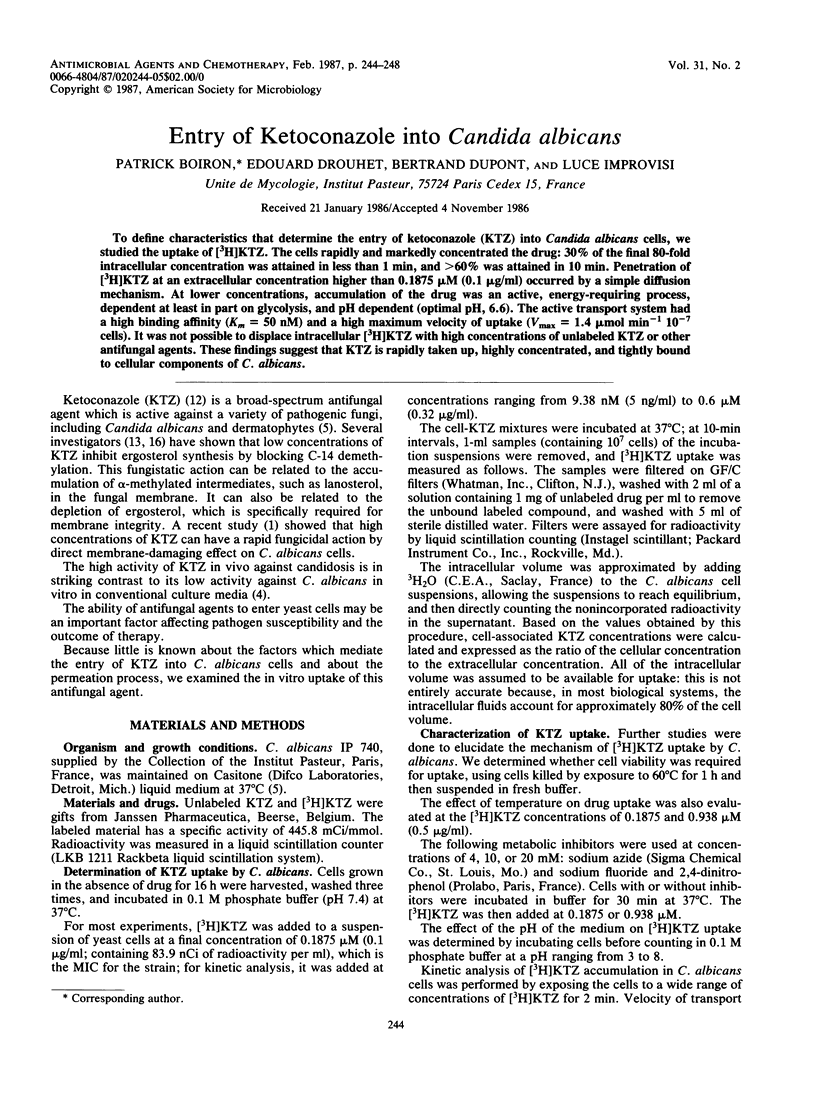
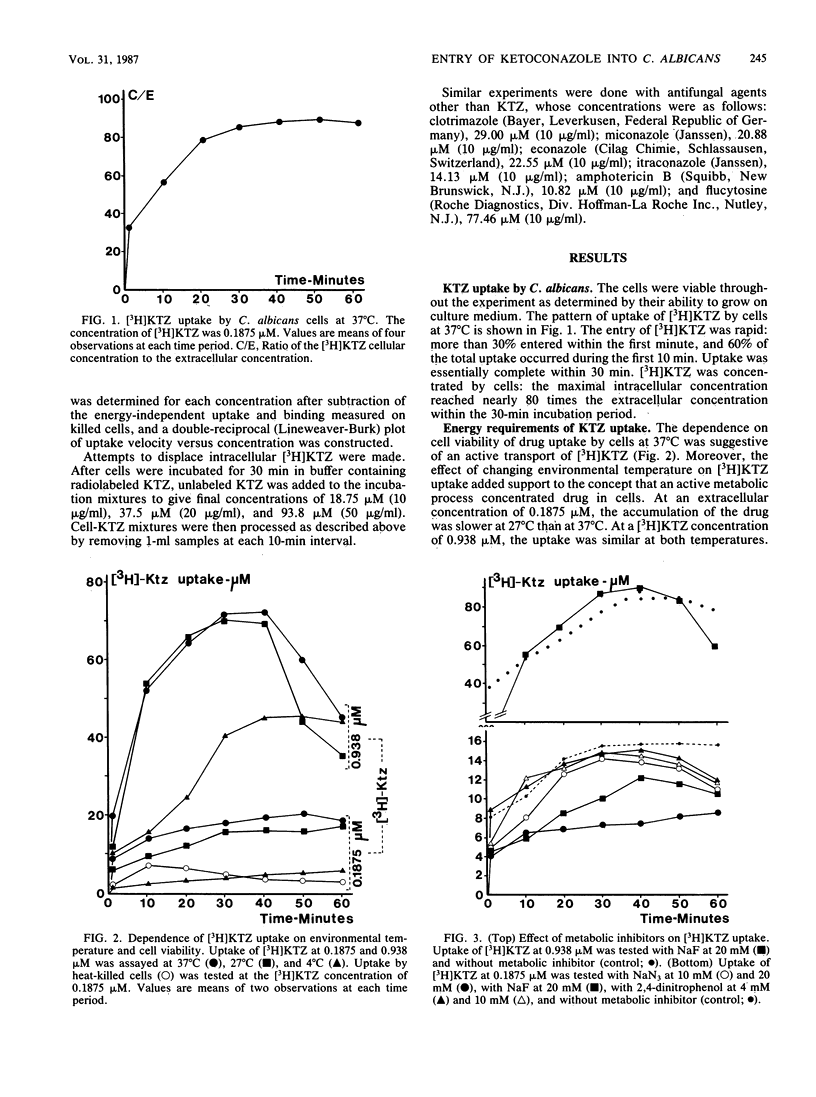
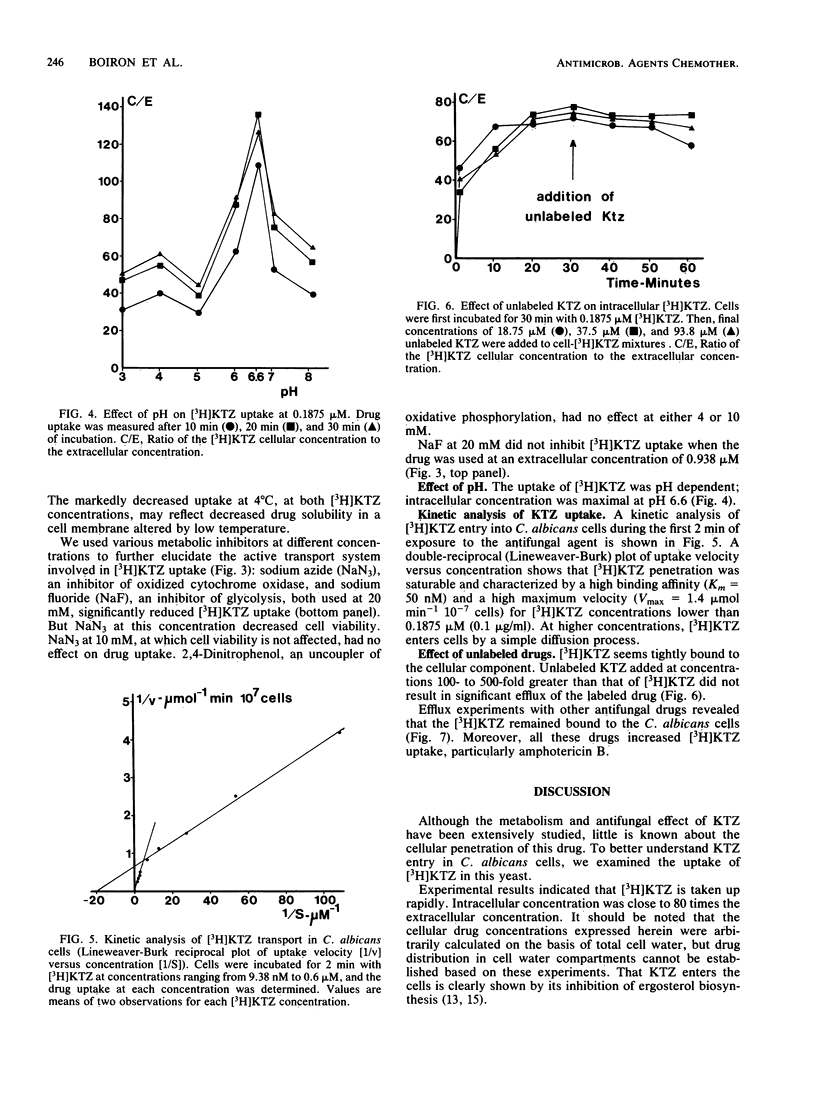
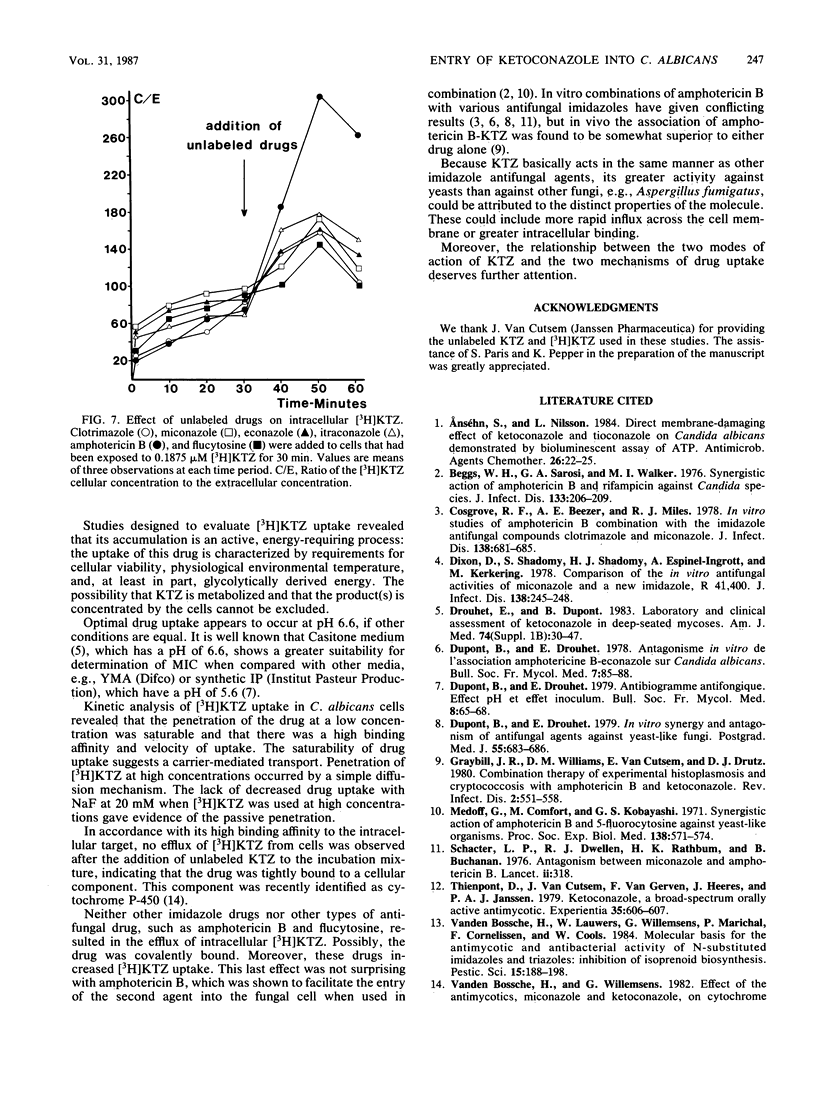
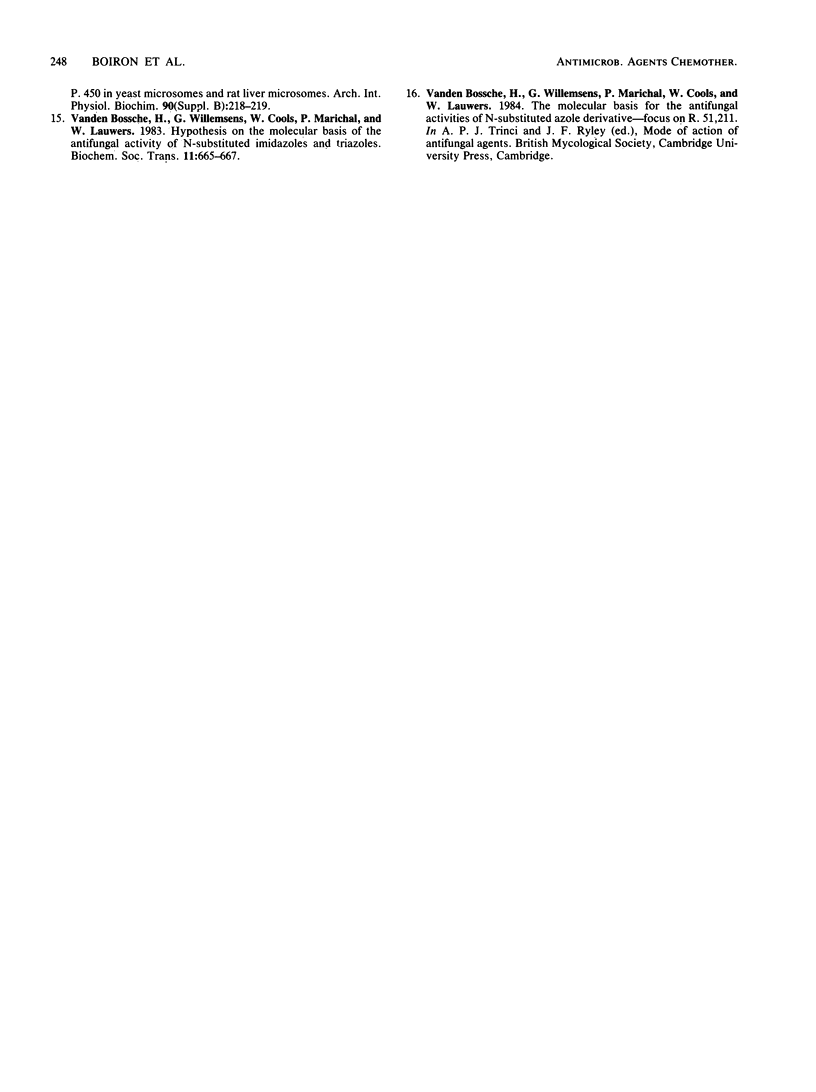
Selected References
These references are in PubMed. This may not be the complete list of references from this article.
- Anséhn S., Nilsson L. Direct membrane-damaging effect of ketoconazole and tioconazole on Candida albicans demonstrated by bioluminescent assay of ATP. Antimicrob Agents Chemother. 1984 Jul;26(1):22–25. doi: 10.1128/aac.26.1.22. [DOI] [PMC free article] [PubMed] [Google Scholar]
- Beggs W. H., Sarosi G. A., Walker M. I. Synergistic action of amphotericin B and rifampin against Candida species. J Infect Dis. 1976 Feb;133(2):206–209. doi: 10.1093/infdis/133.2.206. [DOI] [PubMed] [Google Scholar]
- Cosgrove R. F., Beezer A. E., Miles R. J. In vitro studies of amphotericin B in combination with the imidazole antifungal compounds clotrimazole and miconazole. J Infect Dis. 1978 Nov;138(5):681–685. [PubMed] [Google Scholar]
- Dixon D., Shadomy S., Shadomy H. J., Espinel-Ingroff A., Kerkering T. M. Comparison of the in vitro antifungal activities of miconazole and a new imidazole, R41,400. J Infect Dis. 1978 Aug;138(2):245–248. doi: 10.1093/infdis/138.2.245. [DOI] [PubMed] [Google Scholar]
- Drouhet E., Dupont B. Laboratory and clinical assessment of ketoconazole in deep-seated mycoses. Am J Med. 1983 Jan 24;74(1B):30–47. doi: 10.1016/0002-9343(83)90512-0. [DOI] [PubMed] [Google Scholar]
- Dupont B., Drouhet E. In vitro synergy and antagonism of antifungal agents against yeast-like fungi. Postgrad Med J. 1979 Sep;55(647):683–686. doi: 10.1136/pgmj.55.647.683. [DOI] [PMC free article] [PubMed] [Google Scholar]
- Graybill J. R., Williams D. M., Van Cutsem E., Drutz D. J. Combination therapy of experimental histoplasmosis and cryptococcosis with amphotericin B and ketoconazole. Rev Infect Dis. 1980 Jul-Aug;2(4):551–558. doi: 10.1093/clinids/2.4.551. [DOI] [PubMed] [Google Scholar]
- Medoff G., Comfort M., Kobayashi G. S. Synergistic action of amphotericin B and 5-fluorocytosine against yeast-like organisms. Proc Soc Exp Biol Med. 1971 Nov;138(2):571–574. doi: 10.3181/00379727-138-35943. [DOI] [PubMed] [Google Scholar]
- Schacter L. P., Owellen R. J., Rathbun H. K., Buchanan B. Letter: Antagonism between miconazole and amphotericin B. Lancet. 1976 Aug 7;2(7980):318–318. doi: 10.1016/s0140-6736(76)90774-1. [DOI] [PubMed] [Google Scholar]
- Thienpont D., Van Cutsem J., Van Gerven F., Heeres J., Janssen P. A. Ketoconazole -- a new broad spectrum orally active antimycotic. Experientia. 1979 May 15;35(5):606–607. doi: 10.1007/BF01960348. [DOI] [PubMed] [Google Scholar]
- Van den Bossche H., Willemsens G., Cools W., Marichal P., Lauwers W. Hypothesis on the molecular basis of the antifungal activity of N-substituted imidazoles and triazoles. Biochem Soc Trans. 1983 Dec;11(6):665–667. doi: 10.1042/bst0110665. [DOI] [PubMed] [Google Scholar]


